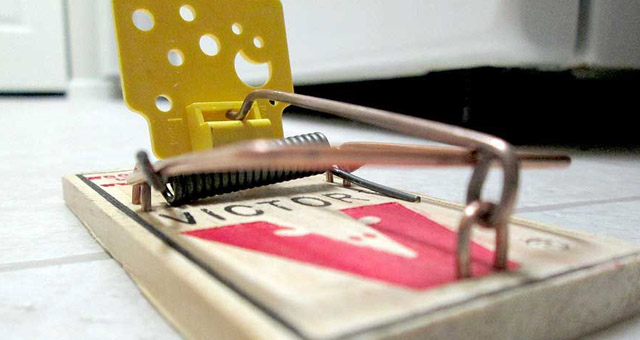RODENTS
Rodents are warm-blooded mammals that, like humans, can be found throughout the world. They have oversized front teeth for gnawing and check teeth, which are adapted for chewing. Rodents chew on a variety of items available to them and cause great damage in and around homes.
Rodents tend to be rapid breeders. Some species breed year-round, and populations are maintained through constant reproduction. Because of the rodents' body plan, they are capable of squeezing through spaces that appear to be much too small for them. All such holes should be sealed to prevent entry and reentry of rodents. A pest control professional should be contacted for assistance.
Rats and mice are both extremely destructive within agricultural communities. A number of species feed on seeds and grains. The feces and urine of some rodents may contaminate surfaces with which they come into contact.

Facts & Control
Inspect: The first step in controlling mice is to inspect feeding areas and exclude mice by closing entry access points.
Look for mice tracks, mice droppings and other rodent signs.
Sanitation: If possible, get rid of human and pet food sources that the mice may be feeding. Enclose the food in tight fitting containers. Kitchen floors, sinks and counter tops need to be kept clean.
Exclusion: Look for openings that the mice can enter your home. They can enter through cracks in foundations, floors or walls. A mouse can fit through a very tiny opening due to their soft cartilages. They can also squeeze through small gaps around utility lines and drainage pipes. All openings greater that 1/4" should be sealed to exclude mice. It may be difficult to find all openings since mice can enter through such small openings.
For more information, exclusion tips will help detect possible entry points.
Mouse Control: After inspecting for signs of mice activity, set mouse traps or place mouse bait in the detected areas.
Setting mice traps or placing out mouse bait are the most trustworthy methods of controlling mice populations.